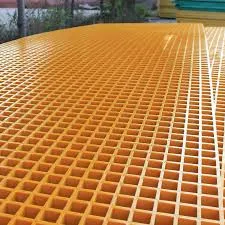
-
 Afrikaans
Afrikaans -
 Albanian
Albanian -
 Amharic
Amharic -
 Arabic
Arabic -
 Armenian
Armenian -
 Azerbaijani
Azerbaijani -
 Basque
Basque -
 Belarusian
Belarusian -
 Bengali
Bengali -
 Bosnian
Bosnian -
 Bulgarian
Bulgarian -
 Catalan
Catalan -
 Cebuano
Cebuano -
 China
China -
 China (Taiwan)
China (Taiwan) -
 Corsican
Corsican -
 Croatian
Croatian -
 Czech
Czech -
 Danish
Danish -
 Dutch
Dutch -
 English
English -
 Esperanto
Esperanto -
 Estonian
Estonian -
 Finnish
Finnish -
 French
French -
 Frisian
Frisian -
 Galician
Galician -
 Georgian
Georgian -
 German
German -
 Greek
Greek -
 Gujarati
Gujarati -
 Haitian Creole
Haitian Creole -
 hausa
hausa -
 hawaiian
hawaiian -
 Hebrew
Hebrew -
 Hindi
Hindi -
 Miao
Miao -
 Hungarian
Hungarian -
 Icelandic
Icelandic -
 igbo
igbo -
 Indonesian
Indonesian -
 irish
irish -
 Italian
Italian -
 Japanese
Japanese -
 Javanese
Javanese -
 Kannada
Kannada -
 kazakh
kazakh -
 Khmer
Khmer -
 Rwandese
Rwandese -
 Korean
Korean -
 Kurdish
Kurdish -
 Kyrgyz
Kyrgyz -
 Lao
Lao -
 Latin
Latin -
 Latvian
Latvian -
 Lithuanian
Lithuanian -
 Luxembourgish
Luxembourgish -
 Macedonian
Macedonian -
 Malgashi
Malgashi -
 Malay
Malay -
 Malayalam
Malayalam -
 Maltese
Maltese -
 Maori
Maori -
 Marathi
Marathi -
 Mongolian
Mongolian -
 Myanmar
Myanmar -
 Nepali
Nepali -
 Norwegian
Norwegian -
 Norwegian
Norwegian -
 Occitan
Occitan -
 Pashto
Pashto -
 Persian
Persian -
 Polish
Polish -
 Portuguese
Portuguese -
 Punjabi
Punjabi -
 Romanian
Romanian -
 Russian
Russian -
 Samoan
Samoan -
 Scottish Gaelic
Scottish Gaelic -
 Serbian
Serbian -
 Sesotho
Sesotho -
 Shona
Shona -
 Sindhi
Sindhi -
 Sinhala
Sinhala -
 Slovak
Slovak -
 Slovenian
Slovenian -
 Somali
Somali -
 Spanish
Spanish -
 Sundanese
Sundanese -
 Swahili
Swahili -
 Swedish
Swedish -
 Tagalog
Tagalog -
 Tajik
Tajik -
 Tamil
Tamil -
 Tatar
Tatar -
 Telugu
Telugu -
 Thai
Thai -
 Turkish
Turkish -
 Turkmen
Turkmen -
 Ukrainian
Ukrainian -
 Urdu
Urdu -
 Uighur
Uighur -
 Uzbek
Uzbek -
 Vietnamese
Vietnamese -
 Welsh
Welsh -
 Bantu
Bantu -
 Yiddish
Yiddish -
 Yoruba
Yoruba -
 Zulu
Zulu
grp fitting
Understanding GRP Fitting A Comprehensive Overview
GRP fitting, short for Glass Reinforced Plastic fitting, is a crucial component in various industries, particularly in the realms of construction, plumbing, and electrical sectors. This material blends the strength of glass fibers with plastics, resulting in a product that is lightweight yet sturdy, making GRP fittings increasingly popular choices for numerous applications.
Firstly, let's delve into the composition and properties of GRP. Glass Reinforced Plastic is made by embedding glass fibers in a resin matrix, usually thermosetting resin. This composite material boasts several advantageous properties it is corrosion resistant, has a high strength-to-weight ratio, and excellent thermal insulation. These qualities make GRP fittings especially suitable for harsh environments where traditional materials like metal or concrete would corrode or degrade over time.
One of the primary applications of GRP fittings is in the construction industry. Here, they are commonly used for piping systems, drainage, and even structural components. Their lightweight nature reduces transportation costs and makes installation easier, which is particularly beneficial in projects involving substantial work at heights or in challenging locations. Furthermore, since GRP does not rust or corrode, it ensures a longer service life, resulting in cost savings over time.
Understanding GRP Fitting A Comprehensive Overview
The electrical industry also finds GRP fittings invaluable. In this sector, GRP is often used to manufacture conduits and cable trays. The non-conductive properties of GRP make it a safe choice for electrical applications, providing essential protection for cables against environmental factors. Additionally, GRP fittings are inherently fire-resistant, which adds another layer of safety in electrical installations.
grp fitting

Moreover, GRP fittings are gaining traction in renewable energy applications, particularly in wind and solar energy sectors. Wind turbine components, such as blades and towers, are often constructed using GRP. The material’s lightweight characteristic boosts the efficiency of transportation and installation, while its durability ensures performance in various weather conditions.
Despite the advantages, it’s essential to acknowledge some challenges associated with GRP fittings. The manufacturing process of GRP can be energy-intensive, raising concerns about environmental sustainability. Additionally, while GRP is resistant to many chemicals, it can still be susceptible to certain agents, such as strong alkalis or solvents. Therefore, assessing the specific application and environment is crucial to ensure the longevity and effectiveness of GRP fittings.
When it comes to installation, GRP fittings require specific techniques to ensure optimal performance. Proper training and adherence to manufacturer guidelines are paramount to achieve a strong and leak-proof connection. Furthermore, quality control during the manufacturing process is essential, as defects can lead to system failures or safety hazards.
Looking forward, the future of GRP fittings appears promising. Advancements in technology and materials science are leading to the development of improved GRP composites that can further enhance performance and sustainability. Innovations in recycling methods for GRP waste are also on the rise, addressing some of the environmental concerns associated with its production and disposal.
In conclusion, GRP fittings represent a blend of strength, durability, and versatility that makes them indispensable across various industries. Their ability to withstand challenging conditions while being lightweight and easy to install offers significant advantages over traditional materials. However, as with any material, understanding their limitations and ensuring proper application is crucial. With ongoing advancements, the role of GRP fittings in modern construction and industry is set to expand, further solidifying their importance in future infrastructure and technology developments. As industries continue to seek more sustainable and efficient materials, GRP fitting stands out as a leading contender in the evolving landscape of materials engineering.









